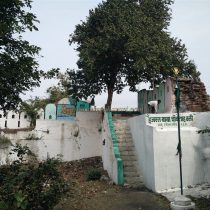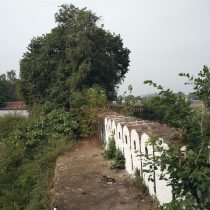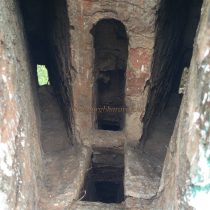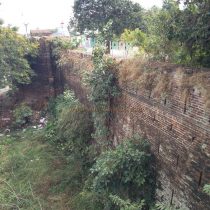UMRED
TYPE : GROUND FORT
DISTRICT : NAGPUR
HEIGHT : 0
GRADE : EASY
Umred in Nagpur is an important town with a tehsil headquarters. As it was an important city in the past, it was fortified by building ramparts around it. Today, only one side of the ramparts of the fort is left and these ramparts are known as the fort of Umred. Looking at the ramparts that exist today, the size of this fort must be very huge as the entire old Umred city was surrounded by this rampart. Today, only one side of the fort and the 5 bastions on it can be seen. Umred is the main town of the tehsil at a distance of 43 km from Nagpur city. Being a taluka town, this place has good transport facilities. Entering the city of Umred via Nagpur on the Itwari route, one can see the fortified ramparts on the bank on the right side of the lake towards the right side of the road and the 5 bastions on the ramparts.
...
Bricks have been used to build the ramparts and bastions, there are barrages for firing cannons and guns in these bastions. Walking along the inside of the ramparts, the tomb of the Sufi saint Hazrat Baba Chandshah Wali can be seen on the first bastion. There are steps to reach the bastion and you can go to another bastion from the curtain wall of this bastion. The ramparts at the front of the second bastion are heavily demolished. There is a school in the next part of the ramparts and the third bastion is present at the school premises so you can't go there. There is a municipal garden in the next part of the school and the fourth bastion is in this garden. Next to the ramparts are the houses of the locals and the bastion here is accessible. Due to the lack of maintenance of the fort's ramparts, it has started crumbling in some places. There is an old Shiv temple in the courtyard of this fifth bastion and a small but deep well can be seen outside the temple. The prayer hall of this temple is newly constructed and one can see a Hanuman idol and some memorial stones in the temple premises. The size and area of the fort cannot be estimated as the ramparts and gates of the fort have been destroyed in the course of time. The bastion of the fort is all worth seeing. 45 minutes is enough to see this part of the ramparts and the surrounding area. The lake inside the fort is built for the settlements inside the fort, so no other water supply system is visible. The fort is believed to have been built in the 16th century by the Gond king Karanshah of Chanda. Later, the fort came under the control of the Bhosle family of Nagpur and in 1850 the whole province came under British rule.
© Suresh Nimbalkar













